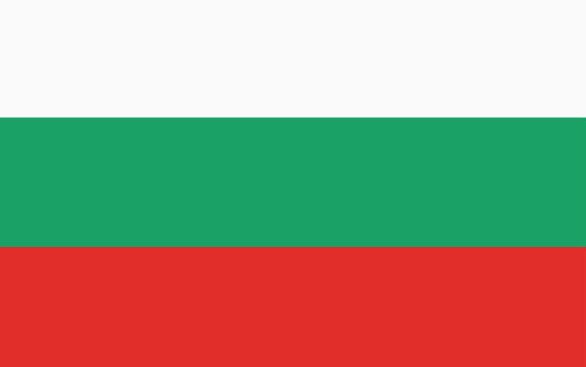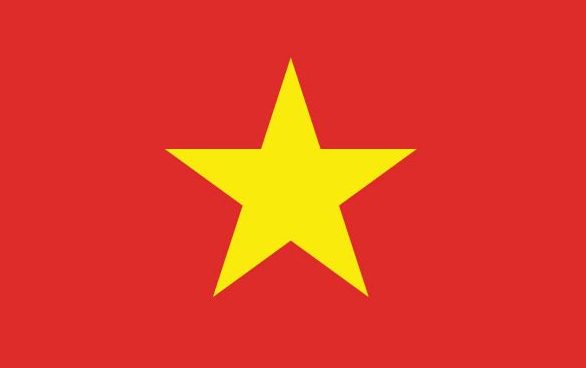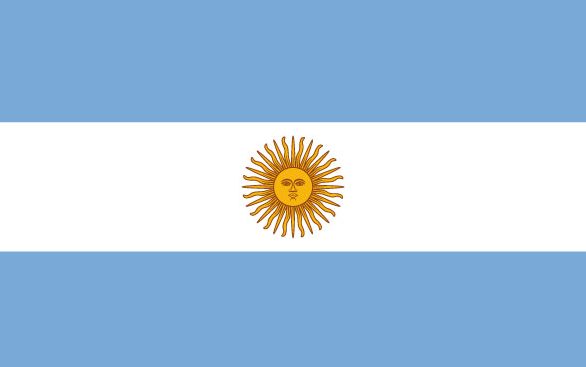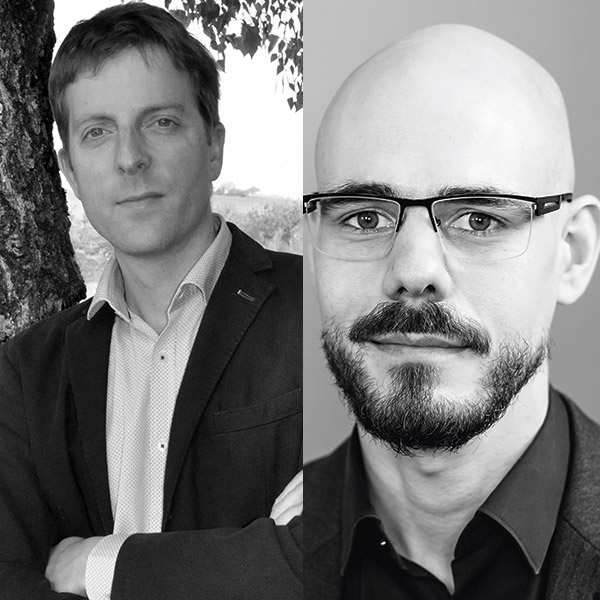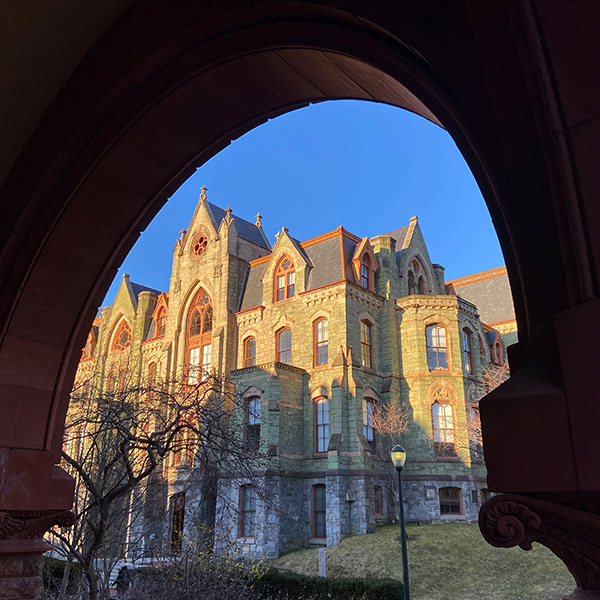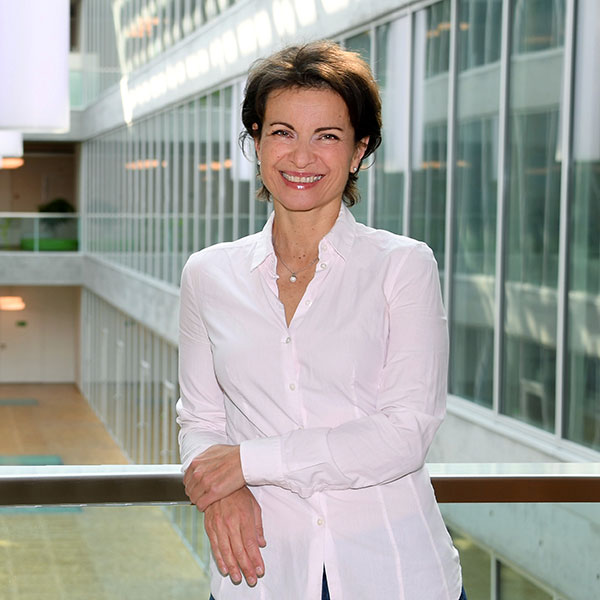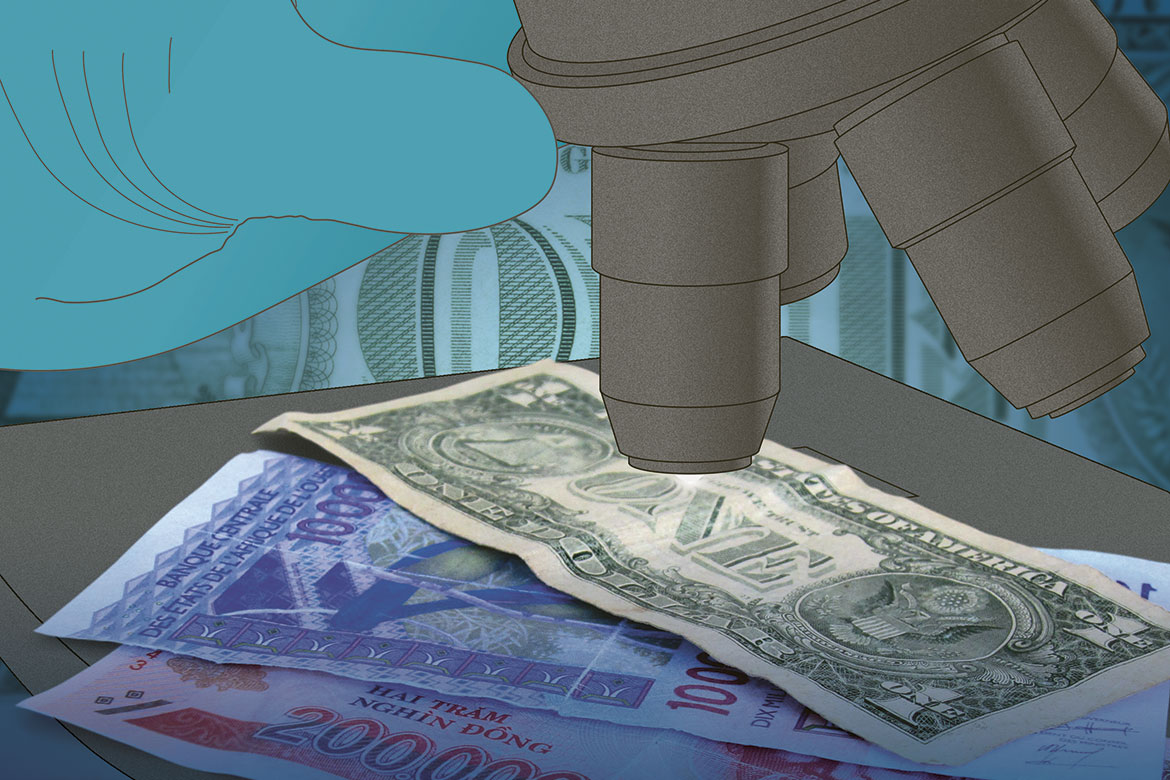
Raising money to conduct basic research is a big challenge in many countries of the world. | Graphic: 2. stock süd
The United Nations has set itself 17 ambitious ‘Sustainable Development Goals’ for the year 2020, from ‘Eliminate Poverty’ and ‘Organize Climate Action’ to ‘Build Partnerships for the Goals’. Researchers are intended to play an important role in all this. “Academies can provide expertise […] in order to advise policymakers and hold them to account”, writes the InterAcademy Partnership, an international grouping of academies of science, medicine and engineering, in a guide for its members.
The scientific expertise involved comes almost solely from the Global North. But it is imperative that the knowledge and experience of people in poorer countries should also flow into worldwide research. Those who are not on board cannot influence the direction of travel. What’s more, excluding scientists outside the Global North means getting a distorted view of humanity, as Canadian psychologists confirmed in an overview published in 2010: “Members of WEIRD societies [i.e., western, educated, industrialised, rich, democratic], including young children, are among the least representative populations one could find”.
International research in figures
Six graphs for ten countries, to illustrate the different conditions faced by researchers across the world.
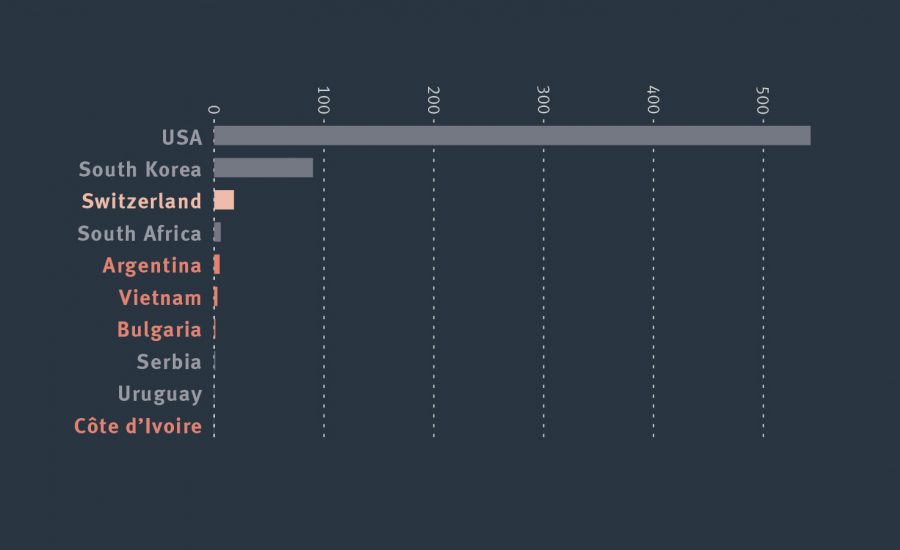

Total expenditure on research and development (R&D) by private companies and the state, in USD.
EXPENDITURE ON RESEARCH AND DEVELOPMENT
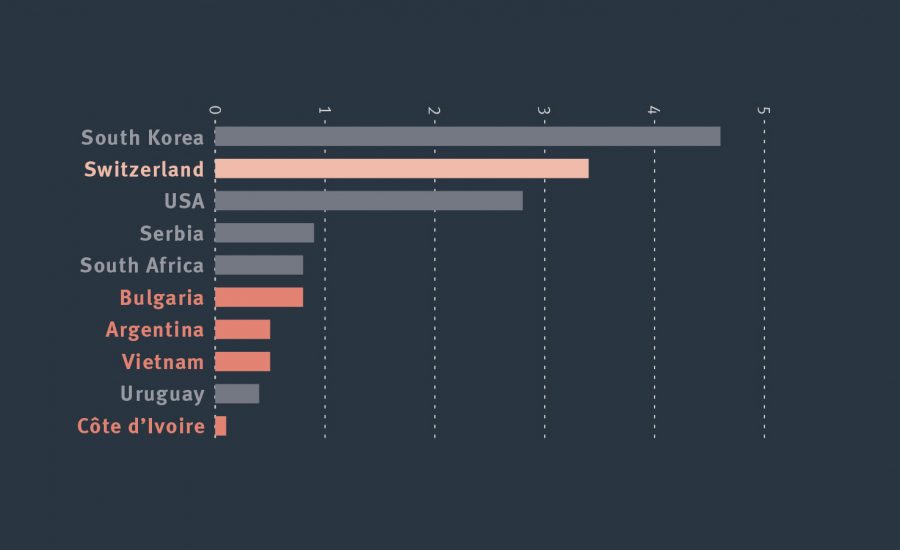

Expenditure on R&D by individual countries in relation to their economic output, as measured by gross domestic product (GDP).
EXPENDITURE ON R&D AS A PERCENTAGE OF GDP
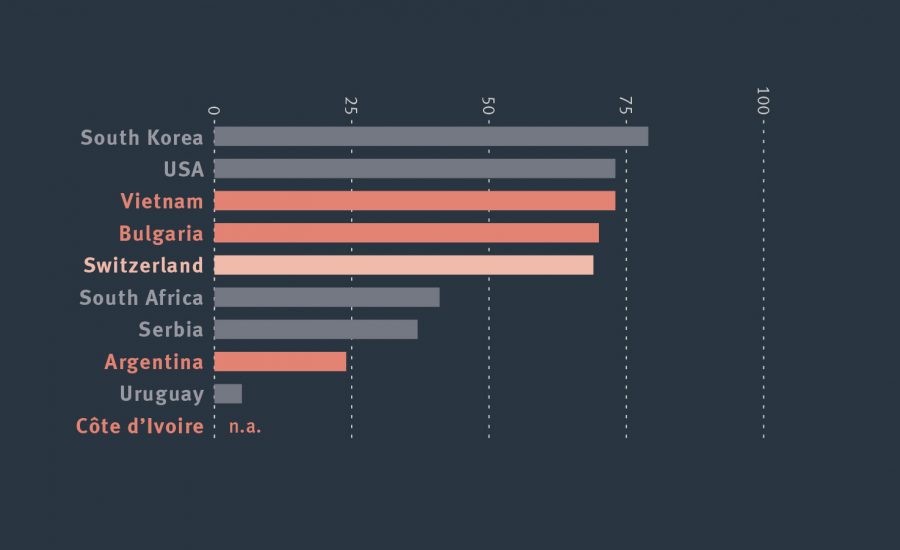

Investment in R&D by private companies in relation to the total expenditure of the country. This figure is typically low in developing countries.
PROPORTION OF PRIVATE COMPANIES INVOLVED IN R&D
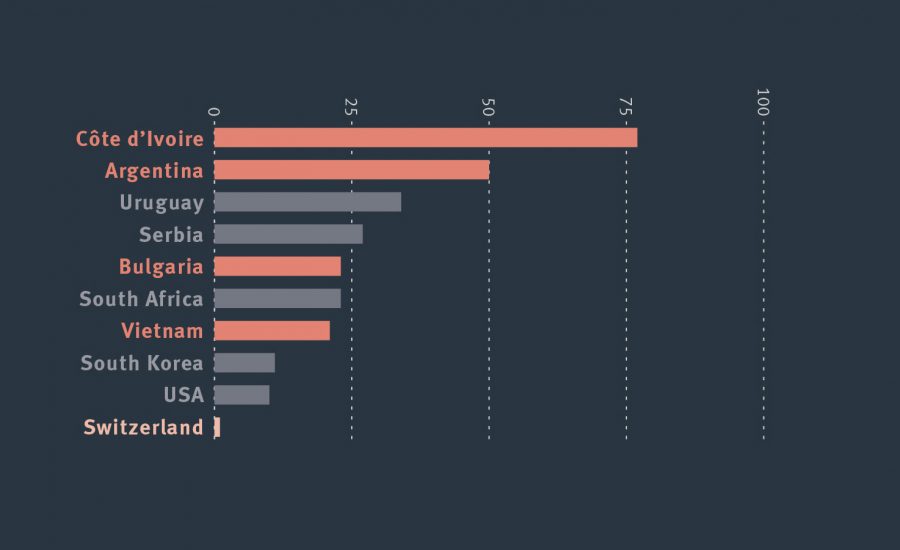

Direct government investment in R&D in relation to total expenditure. Direct funding for universities is not included here, which is why the Swiss figure is low.
PROPORTION OF GOVERNMENT FUNDING FOR R&D
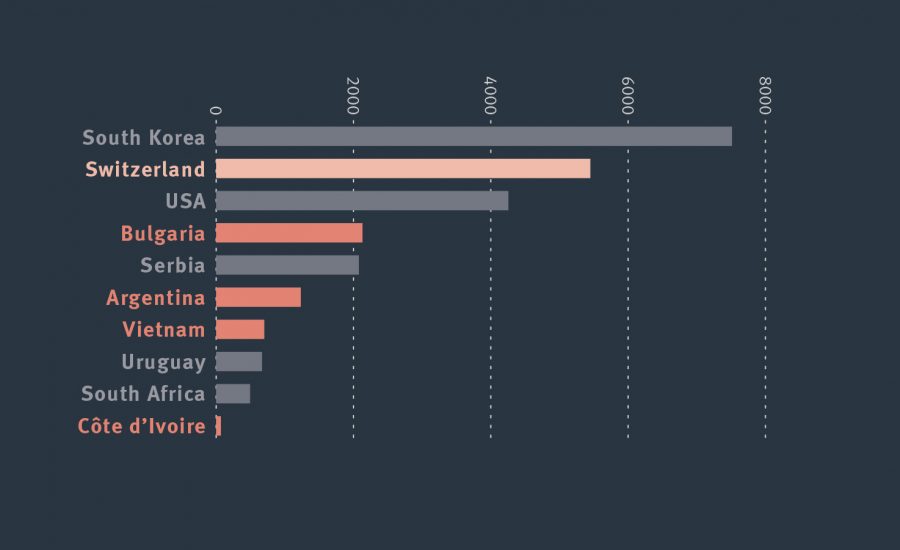

RESEARCHERS PER MILLION INHABITANTS
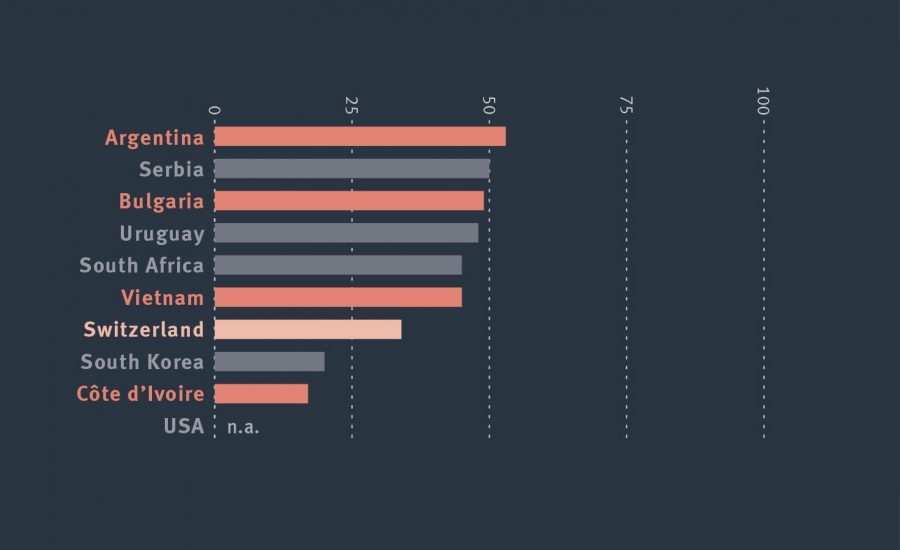
Source: Unesco Institute for Statistics

PROPORTION OF WOMEN AMONG RESEARCHERS
What’s the price of free research?
In countries of the Global South, there is not just less money available for research; the proportion of monies invested in it is also smaller (see the graphic). And when there is indeed money, it’s almost only ever provided for applied research. “It’s rare that you can submit a research application for a freely chosen topic that you yourself find important and motivating”, says Katharina Michaelowa from the University of Zurich, who is an expert in development policy. Basic research is regarded as a luxury.
There is no international organisation that supports independent research topics. There is always an agenda bound up with the money. The United Nations University repeatedly provides small amounts of funding, says Michaelowa, but also only for work in its own fields of activity. Even private organisations like the Bill and Melinda Gates Foundation have their own mission. They are concerned with health, education and nutrition, not with quantum mechanics, brain research or art history.
Michaelowa sees great potential in international research collaboration. The r4d programme is a good example – it’s been funded for several years now by the Swiss Agency for Development and Cooperation (DEZA) and the Swiss National Science Foundation (SNSF). Researchers from Switzerland and poorer countries work together, with a great emphasis placed on true partnerships. The SNSF also has a new funding instrument: SPIRIT. It enables researchers to apply for funding for joint research projects, without any limitations on the choice of topic.
Four countries, four continents
What are the strengths of a country, and what are the most urgent problems for researchers? Click on the bars below to read each country portrait.
BULGARIA:
Few postdocs ever come back
Region: Eastern Europe
Population: 7 million
GDP per capita (USD): 22,000
Researcher: Nina Berova (chemist)
Research funding body: BNSF
For research in Bulgaria, the country’s EU membership is both a blessing and a curse. It’s the poorest country in the Union. Its researchers have access to the money pots of the EU’s programmes, and the EU is also investing in Bulgarian research infrastructure. However, the competition that exists within the EU’s huge research area also serves to exacerbate extant problems in Bulgaria. Ivan Atanassov is the director of the Agrobioinsitute in Sofia. He sees a problem with young researchers: “If a postdoc moves between universities or research institutes, usually they go in one direction: from Bulgaria to abroad”. This is a result of its socialist traditions, but also of a lack of funding. Those that come back are those who are good researchers “who also want to remain ‘Bulgarians’”. The private sector is also hardly motivated to invest in research, given the EU’s support for infrastructure. “[This] encourages industry to search for ‘ready-made’ technological solutions rather than working with national research organisations to develop tailor-made solutions”, says Atanassov. The upheaval at the close of the communist era also severed the links between national industry and the research scene, he says. And applied research has traditionally always had a hard time of it in Bulgaria.
VIETNAM:
The SNSF as a role model
Region: South-East Asia
Population: 96 million
GDP per capita (USD): 7,400
Researcher: Ngô Bao Châu (mathematician)
Research funding body: NAFOSTED
A delegation from the Vietnamese authorities visited the SNSF in 2005 in order to get more information about the Swiss system of research funding. Operational since 2008, the Vietnamese version of the SNSF is called the National Foundation for Science and Technology Development (NAFOSTED). It provides funding for research that has been peer-reviewed by scientists. Their goal is to achieve quality, to promote young researchers, to establish an international exchange of information, and to promote basic research. But there are still strong links between NAFOSTED and the Ministry of Science and Technology, as one can see from the organisation’s website and the e-mail addresses of its staff. “We used to have two quite separate systems, with universities and colleges for teaching and education, and research institutes for doing research”, says Thị Hồng Nhung Nguyễn, the deputy head of the Planning and General Affairs Department at NAFOSTED. But things are now slowly changing. Vietnam has a relatively high proportion of private funding for its research – over 50 percent. The corporations Vingroup and Phenikaa contribute a large amount of money to research, and also run their own universities.
CÔTE D'IVOIRE:
Strong in agricultural research
Region: West Africa
Population: 25 million
GDP per capita (USD): 4,200
Researcher: Laurent Aké Assi (ethnobotanist)
Research funding body: FONSTI
When Switzerland cancelled the debts of Côte d’Ivoire in the early 1990s, part of this money was invested in scientific cooperation on the recommendation of UNESCO. Today, the research conducted in this country is regarded as exemplary on the west coast of Africa. However, the World Bank would like to see more progress, especially more research funding from the private sector. “Research in agronomy is relatively well funded in my country”, says Yaya Sangaré, the manager of PASRES (Support Programme for scientific research), which is intended to channel money from the Swiss debt reduction fund into local research. To this end, the research support organisation FONSTI was created in June 2018, analogue to the SNSF in Switzerland. There is also a separate institution, called FIRCA, that is dedicated to agricultural research. Switzerland has been engaged in research collaboration with Côte d’Ivoire since 1951 (when it was still a French colony), and set up the Swiss Centre for Scientific Research there. This centre was originally a commission of the Swiss Academy of Sciences (SCNAT), but in 2007 it was turned into an independent Ivorian foundation with SCNAT and the SWISS TPH on its board, and it is presided over by the Ivorian research ministry.
ARGENTINA:
Research funds shrink with inflation
Region: South America
Population: 44 million
GDP per capita (USD): 21,000
Researcher: Sandra Díaz (plant ecologist)
Research funding body: CONICET
“Our country has an organised research framework, and it provides […] funding opportunities. It trains young people in research and promotes international cooperation”, says Edith Taleisnik, a plant ecologist at the National Agricultural Technology Institute (INTA), which is attached to the Ministry of Economy. “The main problem is the recurrent economic crises in the country, because they affect the release of research funds and their actual value”. The high inflation rate in Argentina is also a problem for researchers, because after a project has been running for five years, the funding it receives is worth considerably less than before. This means less can be achieved than originally planned. It is difficult to plan for the long term, says Taleisnik. It’s “almost a miracle” if funding is paid out on time, she says, and there is no long-term science and technology policy because these things are revised after every change of government. International cooperation in research primarily takes place with the USA and Europe, and less with neighbouring countries. “Argentine researchers would be delighted to partner with Swiss researchers […] and develop the sort of agreements Switzerland currently has with Brazil”, says Taleisnik.
One interesting possibility is to support young researchers who have completed part of their academic education in Switzerland, and now want to set up their own research group in their home country. This has been tried out successfully in a pilot project in Eastern Europe, says Michaelowa. “It’s very helpful, because scientists often have massive teaching commitments in their home countries, and this means they can buy themselves time for research”. At the same time, the programme supports contact between these excellent researchers and their Swiss research partners. This is an approach that Michaelowa believes would also be attractive when engaging in research collaborations with developing countries.
Researchers aren’t the poorest
More research, more development – that’s the usual solution. So wouldn’t it be logical to channel most development aid into research? Michaelowa disagrees: “It’s often impossible to build on existing potential because the necessary structures just don’t function. Some universities in Rwanda, for example, don’t even have a fixed timetable”. And there often aren’t enough private companies there that could turn research results into practical applications.
“Good research needs the broader population to have a good basic education”.Katharina Michaelowa
It’s also the case that the private sector in the Global South hardly invests in research (see the graphics). Sometimes, money even flows from the state into companies instead. “Research and development inside companies is largely paid for by the public purse in a country like Brazil, for example”, says Michaelowa. What’s more, it’s important to set the right priorities. “First and foremost, good research needs the broader population to have a good basic education”, she says. Researchers in those countries aren’t the poorest of people. “So an effective aid policy mustn’t concentrate on a single topic such as research. We have to act in an interconnected way”.








